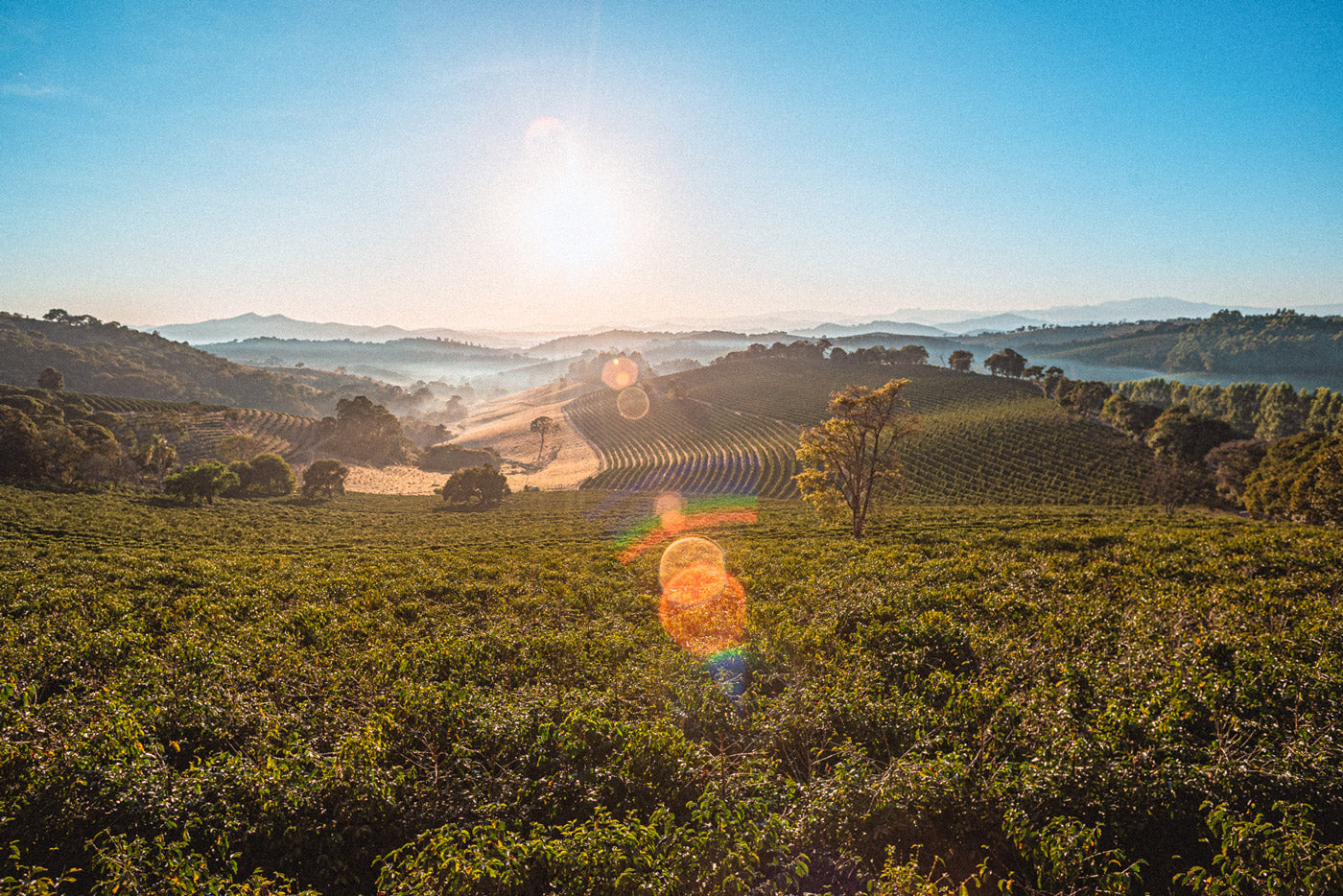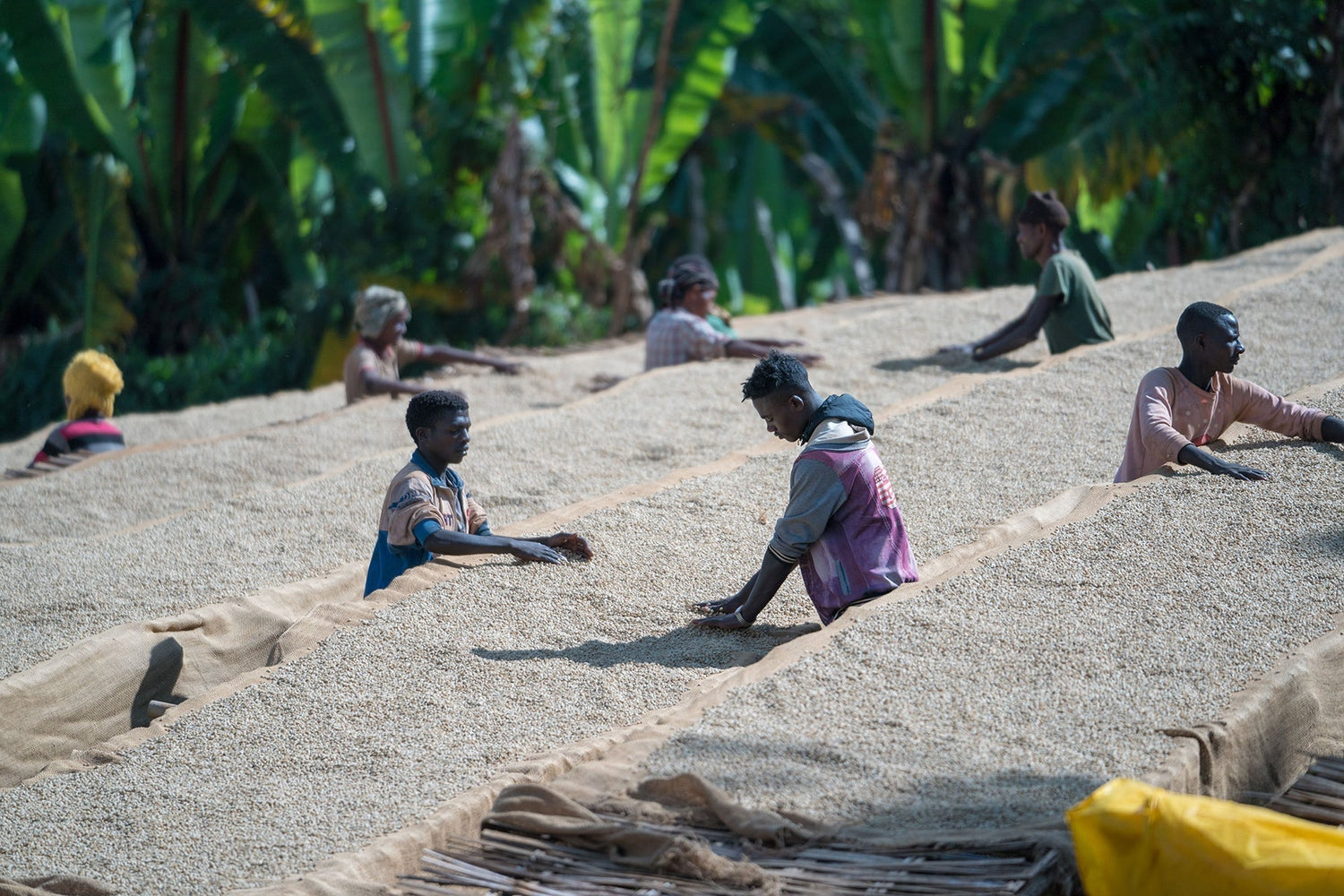Cupping - If you look into the subject of coffee or even specialty coffee in more detail, you will often come across the term "cupping". But only very few coffee drinkers know what cupping is. I can tell you in advance that it involves tasting the coffee. However, not all tastings are the same. During cupping, many exciting things are discovered, determined and developed further so that the end product in your cup creates a harmonious overall picture. You can find out how it works in this blog article. Elias Fischbacher from the Wildkaffee Rösterei wishes you lots of fun discovering.
Cupping coffee - What is cupping?
Let's go back to the question we asked at the beginning: What is cupping anyway? You could already find the simple answer in the teaser. Cupping is generally the term for tasting coffee. Relatively coarsely ground coffee is put into so-called cupping glasses, directly poured over with hot water and then extracted for 4 minutes. This creates a crust, which is then broken and skimmed off. The rest of the coffee settles at the bottom of the glass. The coffee is then tasted using a special spoon.

Cupping coffee - Why is cupping performed?
Why cupping, or coffee tasting, is carried out is actually pretty easy to understand. You are probably familiar with the detailed taste description on our coffee packaging. These individual notes and aromas are determined in our roastery during cupping. In addition, an evaluation, the so-called cupping score, is carried out during cupping. The individual evaluations are made based on the following aspects:
Aroma
The taste
aftertaste
acid
Body
balance
Overall picture
This results in a cupping score that can be up to 100 points. If the score is over 80 points, we call it specialty coffee. The cupping score is particularly important to us when purchasing our green coffee. Only beans with a cupping score of 85 or higher are processed in our coffee roastery. To do this, the coffees are tasted in large quantities before purchase so that a suitable roasting profile and taste tendency can be determined beforehand. The aromas and notes are determined using the aroma wheel.
Cupping coffee - what do you need?
You too can easily do cupping at home. It's important that you have the right equipment for coffee tasting with you. It's actually quite simple: a suitable glass (see photo), a cupping spoon and a suitable grinder, such as the Fellow Ode . As described above, the coarsely ground coffee - we recommend 11g per glass on level 8.5 ( Fellow Ode ) - simply needs to be poured over. Simply leave to steep for 4 minutes , break the crust and skim the coffee off the surface. Now you can start sipping and compare the variety of flavors of coffees from different countries. Please note that you should not eat any garlic or other strong foods before cupping. This will distort your sense of taste.

Cupping coffee - How often is cupping done in a coffee roastery?
When working in a coffee roastery, cupping is almost part of everyday life. Of course, cupping doesn't happen every day. But especially when new beans from the countries of origin, so-called samples, are delivered to us, they obviously have to be put through their paces. And cupping is the ideal tool for quality control. But our own espressos, omniroasts and specialty coffees are also tasted regularly so that the best quality can be guaranteed. So cupping takes place several times a week in the Wildkaffee Roastery so that the consistently highest quality can always be guaranteed.

Cupping coffee - in the countries of origin
But cupping doesn't just take place in the roastery. The coffees are also checked for the above-mentioned aspects in the countries of origin, because the farmers also have to check whether their coffee, the selected processing and the respective preparation are suitable for the bean. Here, too, there is a lot of room for experimentation, which is why cupping in the farms in the countries of origin is just as important as in the coffee roastery itself. A real highlight of cupping in the countries of origin, however, is joint cuppings - i.e. farmers and roasters at one tasting table!
Cupping coffee as a connection between farmer & roaster
Especially when it comes to transparency and direct contact with farmers, joint cupping is an excellent tool. Taste preferences, experimental methods and trends can be discussed directly. This usually results in an exciting exchange in which wishes and suggestions are formed into a new overall result. The farmer knows even more precisely what quality and taste the roaster expects. Ideally, this is also reflected in the demand that the customer, i.e. the coffee connoisseur, expects in their cup. This gives farmers an even better feel for the wishes and allows them to flow into the cultivation and processing. In return, roasters get a feeling for how the cupping properties can be specifically influenced so that the desired cup profile can be created.

Cupping coffee - conclusion
Cupping is a coffee tasting process that plays an important role in evaluating aromas, taste and quality. Cupping involves placing coarsely ground coffee in glasses, pouring hot water over it and extracting it for a certain amount of time. After breaking the resulting crust, the coffee is tasted and evaluated based on various criteria such as aroma, taste, acidity and overall appearance. The cupping score provides information about the quality of the coffee, with a score of 80 points or more being considered specialty coffee . Cupping is carried out both in coffee roasters and in the countries of origin to check the quality and define the taste. It also serves as a means of communication between farmers and roasters to optimize cultivation and processing methods and meet the expectations of coffee lovers. #staywild


